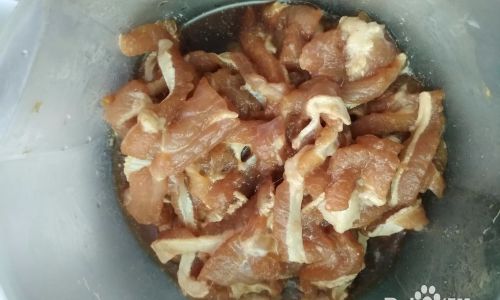Stir-frying fresh lean meat is a culinary art that combines speed, precision, and flavor into one satisfying dish. Whether you’re a seasoned chef or a home cook eager to impress, mastering this technique can elevate your meals from ordinary to extraordinary. In this comprehensive guide, we’ll explore the essentials of stir-frying fresh lean meat, from selecting the right cuts to perfecting your cooking technique. By the end, you’ll be equipped with the knowledge and skills to create a stir-fry that’s not only delicious but also nutritious and visually appealing.
Understanding Fresh Lean Meat
Before diving into the stir-fry process, it’s crucial to understand the types of fresh lean meat available and how to choose the best ones. Lean meat refers to cuts with low fat content, making them healthier options for your stir-fry. Popular choices include chicken breast, pork tenderloin, beef sirloin, and turkey breast. Each type of meat has its unique texture and flavor, so selecting the right one depends on your personal preference and the dish you’re aiming to create.
When purchasing fresh lean meat, look for cuts that are firm to the touch, have a bright color (without discoloration), and a pleasant aroma. Avoid meat that appears slimy, has an off-odor, or has dark spots, as these are signs of spoilage. Additionally, always check the packaging for sell-by dates and ensure the meat has been properly refrigerated or frozen to maintain freshness.

Preparation is Key
Once you’ve selected your fresh lean meat, proper preparation is essential for a successful stir-fry. Start by trimming any excess fat or sinew, as these can make your dish greasy and tough. Next, slice the meat into thin, uniform pieces. The thinner the slices, the quicker they’ll cook, ensuring tenderness and even cooking throughout.
Marinating the meat can also add a layer of flavor and tenderize it further. A simple marinade of soy sauce, garlic, ginger, and a touch of cornstarch can work wonders. Let the meat sit in the marinade for at least 30 minutes, preferably in the refrigerator, to allow the flavors to penetrate deeply.
The Importance of a Hot Wok or Pan
Stir-frying is a high-heat cooking method that relies on the rapid transfer of heat to cook ingredients quickly while retaining their moisture and nutrients. This is why using a wok or a heavy-bottomed pan is crucial. These utensils retain heat well and distribute it evenly, creating the perfect environment for a successful stir-fry.
Before adding any ingredients, preheat your wok or pan over high heat until it’s smoking hot. This ensures that the meat will sear immediately upon contact, locking in juices and creating a delicious caramelized exterior. Remember, the secret to a great stir-fry is to cook fast and furious!
The Art of Stirring
The name “stir-fry” itself hints at the importance of constant stirring. This not only ensures even cooking but also prevents the meat from sticking to the pan or overcooking. Use a spatula or a wok spoon to toss and turn the meat continuously, ensuring every piece gets equal exposure to the heat.
Timing is everything in stir-frying. Overcooked meat becomes dry and tough, while undercooked meat can be unsafe to eat. As a general rule, thin slices of chicken breast or pork tenderloin will take about 3-4 minutes to cook through, while beef sirloin might need a bit longer, around 5-6 minutes. Keep a close eye on the meat and adjust the cooking time accordingly.

Adding Vegetables and Sauce
Once the meat is nearly cooked, it’s time to add your vegetables. Choose crisp, fresh vegetables like bell peppers, broccoli, snap peas, or carrots. Cut them into bite-sized pieces to ensure they cook quickly and evenly. Add the vegetables to the hot wok or pan, stirring constantly to avoid overcooking.
As the vegetables begin to soften, it’s time to add your sauce. A good stir-fry sauce should be flavorful, slightly thickened, and able to coat the ingredients evenly. Common ingredients include soy sauce, oyster sauce, hoisin sauce, rice vinegar, and a touch of sugar or honey for sweetness. You can also incorporate fresh garlic, ginger, and chili peppers for an extra layer of flavor.
Pour the sauce over the meat and vegetables, stirring continuously until everything is well-coated and heated through. Be careful not to overcook the vegetables, as they should still have a bit of crunch.
Serving and Enjoying
Once your stir-fry is ready, transfer it to a serving dish and garnish with chopped herbs like cilantro or scallions for a fresh, vibrant finish. Serve immediately while hot, accompanied by steamed rice, noodles, or even a bed of lettuce for a lighter option.
In conclusion, stir-frying fresh lean meat is an art that combines science, skill, and creativity. By following the tips outlined in this guide, you’ll be able to create a dish that’s not only delicious and nutritious but also visually stunning. Remember, practice makes perfect, so don’t be afraid to experiment with different cuts of meat, vegetables, and sauce combinations until you find your perfect stir-fry recipe. Happy cooking!






0 comments